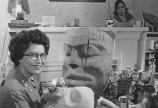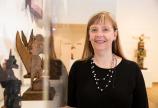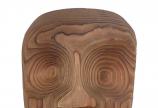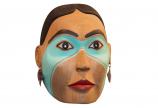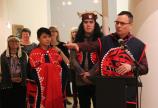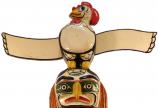“Our women have always carved”
- Tara Sharpe
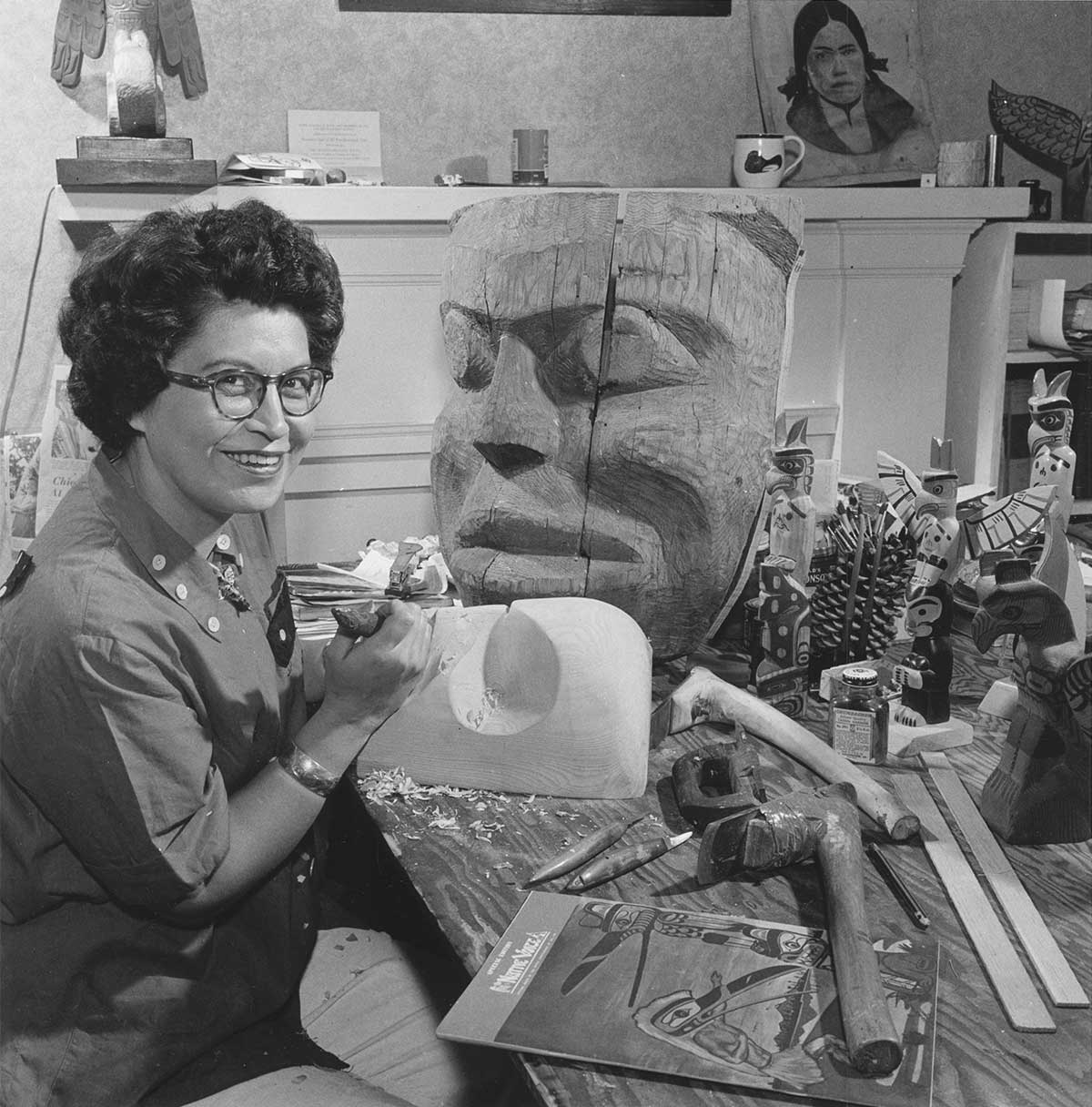
The newest exhibit at UVic's Legacy Gallery Downtown seeks to correct gendered colonial myths with works by Ellen Neel, a woman carver of the Northwest Coast.
Ellen Newman Neel (Kwagiulth, Kwickwasutaineuk and 'Namgis) is often described as the first Northwest Coast woman carver. A prolific artist, she was only 49 years old when she passed away in the 1960s. But her defiance of gender barriers and federal law carries deep resonance for all Canadians to this day—and now within the context of the Truth and Reconciliation Committee’s calls to action—and her legendary impact and artistic legacies live on in the work of her children, grandchildren and great-grandchildren.
The first exhibition of Neel’s work in more than 50 years is now showing at UVic’s Legacy Art Gallery Downtown.
Butler Palmer was assisted throughout the process by two advising curators, David A. Neel (Neel's grandson and the son of David Lyle Neel) and Lou-ann Ika’wega Neel (her granddaughter and the daughter of Neel’s son Ted). The exhibit includes artwork from six generations of the Neel family, including David’s two children.
The Globe and Mail recently featured a story on Neel and the exhibit in its national arts section. Lou-ann was interviewed by The Globe. She said that it’s “‘really a colonial idea that our women didn’t carve. Our women have always carved.
‘I’ve already heard a few people say, “Well, you know, our grandmother was also a carver.” Good, I want to hear about her. Let’s talk about her, too. Because all of our communities need these role models to come from the last couple of generations and encourage our young girls and women to pursue the arts, too.’”
A revolutionary artist and activist
Born in Alert Bay in 1916, Neel learned during the 1920s to carve from her grandfather—the eminent master carver Yakuglas/Charlie James—at a time when the Indigenous art of carving was banned in Canada under the Indian Act. She then launched her artistic career in the 1940s during the potlatch prohibition when carving was rare and the idea of a woman carver was even rarer still.
An artistic legacy of national significance
Butler Palmer, an associate professor in the Department of Art History and Visual Studies at UVic, worked for 15 years on research in support of the exhibit at UVic’s downtown public art gallery and a book project.
“Ellen Neel was a remarkable woman,” says Butler Palmer. “Seven decades before the TRC published its findings, Neel graciously and very publically supported the rights of Indigenous people, to fish, to fair wages, to an education and to make art.
“Neel was also an important role model and mentor for young artists such as Bill Reid, Art Thompson and Robert Davidson. It is hard to imagine the Northwest Coast art world today without the foundation laid by Neel in the 1940s, 50s, and 60s.”
Director of UVic Legacy Art Galleries Mary Jo Hughes adds, “We are honoured to be able to facilitate this exhibition and be able to mobilize the important research by Dr. Butler Palmer and the Neel family. This project brings to public notice Ellen Neel who, perhaps unbeknownst to many of our gallery visitors, played such a pivotal role in the art of the northwest.”
Art across generations
In 1947, with the ban still in place, Neel established her own carving business. She opened a retail outlet in Stanley Park, The Totem Arts Shop, in 1951 where she taught her children to make art. They carved hundreds of items destined for the tourist market.
She also produced monumental and miniature memorial poles, including The Wonderbird Pole of 1953 for White Spot Restaurants, as well as an extensive collection including masks, hand puppets, textiles, jewelry and totemware ceramics.
Neel designed the famous Totemland Pole too, which was a commission from a tourism organization with hundreds of the miniature poles gifted to visiting dignitaries, as well as other people beyond BC including Bob Hope and Katharine Hepburn.
As she told a UBC audience during a keynote address in 1948: “Were it not for the interest created by the tourist trade, the universities and the museums, we would no longer have any of our people capable of producing this art.
“I have strived in all my work, to retain the authentic, but I find it difficult to obtain a portion of the price necessary to do a really fine piece of work.
“Only when there is an adequate response to efforts to retain the best of our art will it be possible to train the younger generation to appreciate their own cultural achievements.”
The exhibit runs through April 1.
Photos
